Incubating future movements in travel and culture
Words Frankie WechslerImages Arnaud MontagardVideo Eldon van Aswegen
Founded by Alejandra Martínez in 2015, Anónimo is a pioneering art platform with an unusual concept: artworks from leading contemporary artists are sold unsigned, giving collectors the opportunity to connect with the work free from preconceptions. Martínez ran four editions in Miami during Miami Art Basel, before going on to hold Tamayo and Faena editions in Mexico City and Miami respectively, and the first textile edition in Oaxaca—where she raised $90,000 to help preserve local indigenous weaving traditions. Most recently, Anónimo partnered with Further to bring six Mexican and Mexico-based artists to Marfa, Texas to create a series of interactive, site-specific works inspired by the high-desert landscape of Marfa to raise money for local educational programs and legal aid across the border. We caught up with her to talk art, anonymity and the mystical power of Marfa.
Alejandra Martínez: Anónimo really did start as this experiment where we were trying to give value to the artwork on its own, and not necessarily the labels that come once an artist is successful. But I think more than that, my whole trajectory started when I started doing this very tiny festival on the Pacific coast in in a place called Careyes. Careyes is a very tight international community, and I'd been going there since I was four years old. It's a very special, remote place. It's similar to Marfa, in terms of how tight its community is. I wanted to bring contemporary Mexican culture to the Careyes community and just see what happened. My biggest satisfaction was that this whole collecting culture started and it was more like the beginnings of these tiny little Medicis. At that time, the contemporary art industry in Mexico was really in its toddler beginning stages. Then this web of beautiful community connection and support grew, way beyond my effort. That was the most valuable thing. So when Anónimo started getting traction ,I thought I need to build something that isn't just about this one piece that you bought. But I wanted it to be more about taking people out of their comfort zone and coming for three or four days to a different place. And if they take a piece home, fantastic. But the value of the experience is calling me more.
Martínez: Definitely from an artist's point of view, it’s a very democratic way of presenting them. It doesn't matter what their career looks like, or their market value. It really is about the ones that were selected to be part of that edition and how that speaks to the people that we're calling in, who are making the effort to be there.
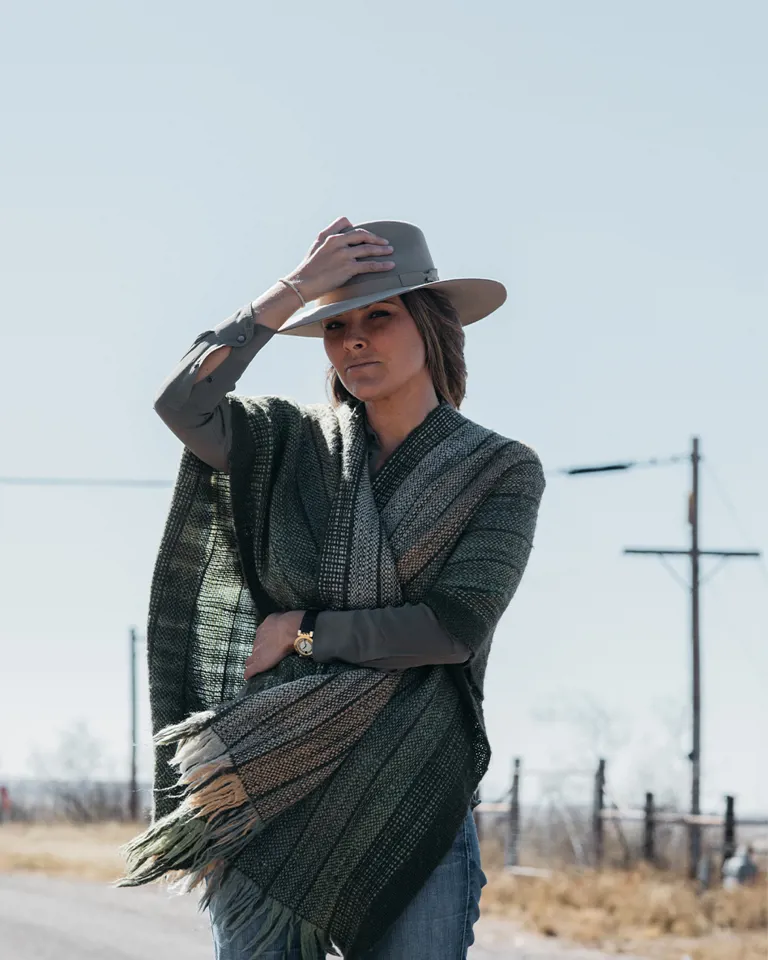
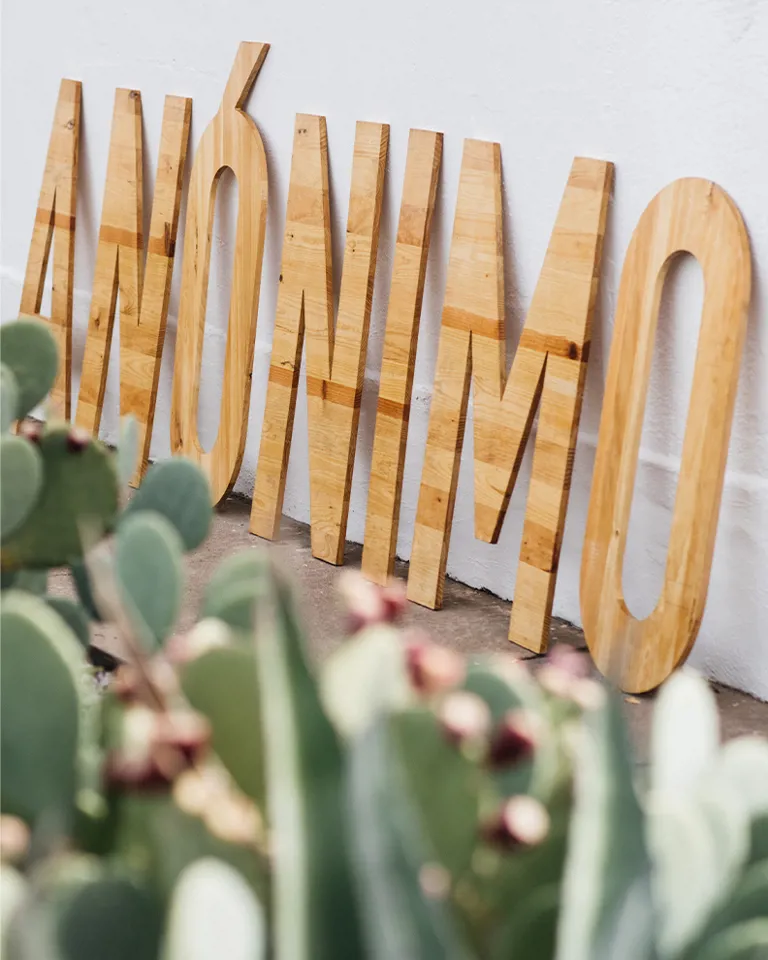
Martínez: Marfa has obviously always been in my radar for many reasons, not just the whole art world scene. I think it's because my soul belongs to this little community in Careyes, and I found all these similarities. When I did get the invitation, my first reaction was “I need to go.” I first wanted to really understand the soul of the place before making any decision. Doing an auction here felt very vulgar, because there's something very sacred about this place. And that's the second thing I understood is that although the place itself is wildly valuable, beautiful and completely surprising in so many ways—and also freeing, weird and perfect—it’s the act of coming here that makes you understand all of these things. So I found it a little bit of a pilgrimage to get here and that once you're here, it's an even bigger commitment to be here in your absolute presence. I wanted to create something that was about the experience of getting here. I wanted it to be zero about sales. And then if we do sell something, how wonderfully surprising—bravo. I didn't want to have that energy of selling work at all—not between us, not with our guests, not with the community, not with anything. With 30 percent of the sales we generate, we're supporting immigration, legal aid and then also a few local foundations as well. It just felt like the right fit. The themes were based on what it feels like to be in a context like the desert. So it really boils down to the core values.
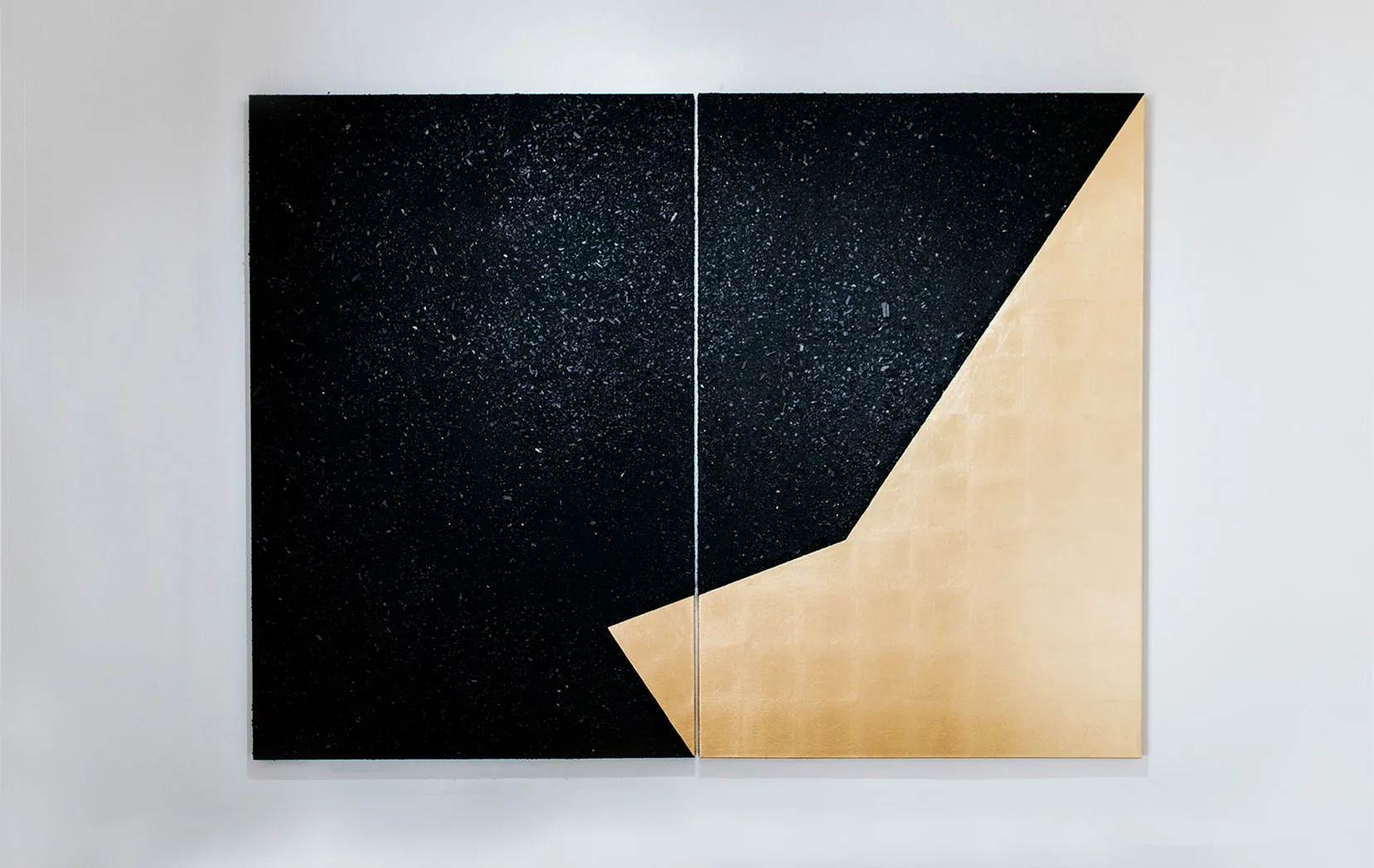
Martínez: The themes started circulating, and we started inviting artists to send us proposals. It was hard to choose. We received so many amazing proposals. But I'm not only happy with what came about; I'm actually quite surprised. The final work is much, much higher quality than what I’d ever imagined. But again, I think the process is the most valuable part. The process of selecting the art is super exciting, and then starting to produce, coming here, discovering it, getting nervous and then that easing off, and then being free and comfortable. That whole process is what we're here for.
Martínez: I think the border towns, regardless of what decisions are made in Mexico City and Washington politically, the relationship between these two countries will forever continue in a very tight way. Regardless of these big calls and big decisions—it’s unstoppable. Every industry in Mexico and the U.S. has its own very tight relationship.
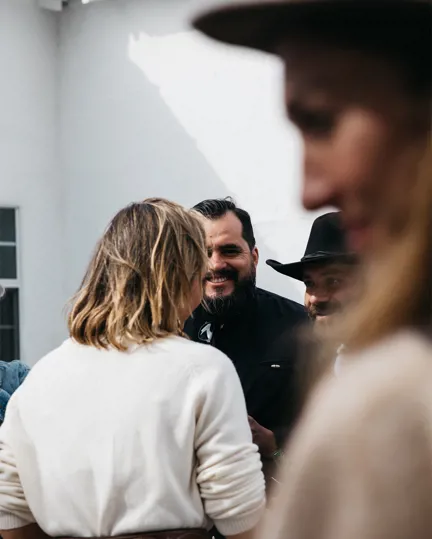
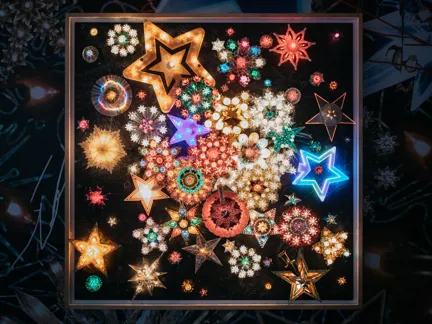
Martínez: It depends on how far back you want to go. If you go way back, this used to be Mexico. Then more recently, it all started with the NASA space base that they opened during the Cold War. And then there's this whole conspiracy theory around the Marfa Lights. Then the psychedelic movement came, and that is when Judd came. He wasn't Donald Judd then; he was a very well established, mid-career artist. And his other minimalist colleagues were also mid-career. It’s very bold what he did, but more than bold, I love the fact that being in the middle of nowhere, there is that level of quality in the art, which is taken to a precision and scale that goes way beyond. That's what blew my mind. That’s one of the aspects that made me fall in love with this place the most. Afterwards came the recognition, the followers and the career, and the industry. But at the time, they were in the middle of nowhere. They had just bought these military bases that were abandoned with the DIA foundation money, and they just took it to the limits and then afterwards everything else came. But that alone is just wildly inspiring.
Martínez: Well, we have planned the next four to six editions. With this edition we kind of broke out of the art auction rule book and made an edition of its own, and I'm so happy with it.
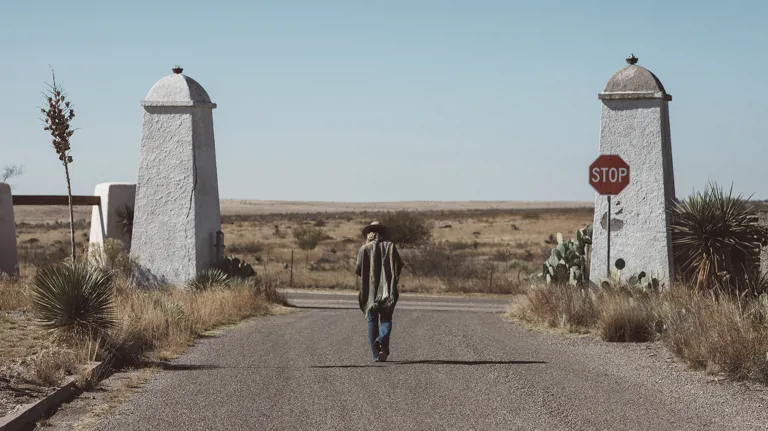
Further Borderlands
On a windswept stretch of Texas desert re-envisioned as a minimalist art mecca, Further Marfa set out on an exploration of borderlands: between art and commerce, city and country, Mexico and red-state USA, somewhere and nowhere.
Further Borderlands
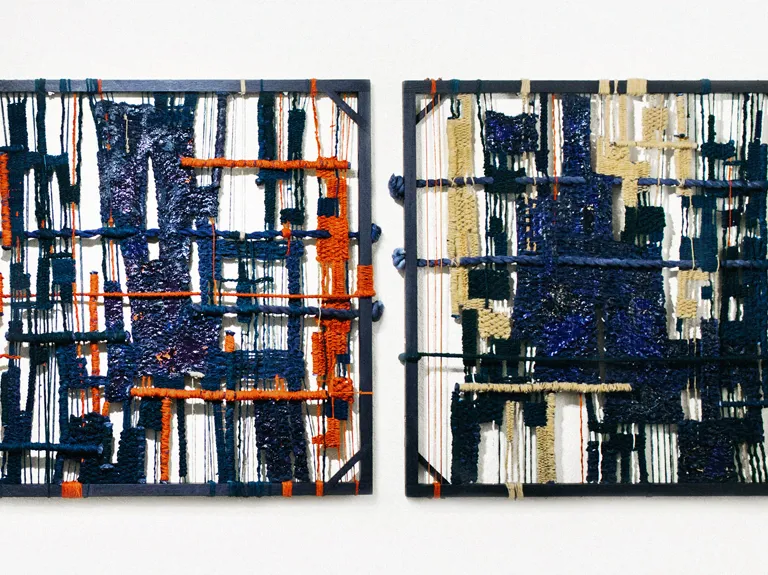
Textile designer Gerardo Ruiz-Musi explores technology, the self, and the concept of truth with his exhibition at Further Marfa.
Further Borderlands
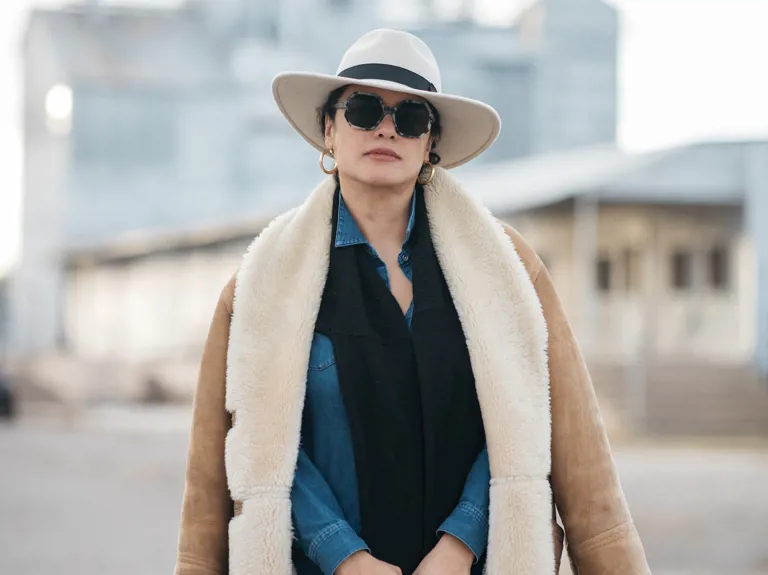
Since opening a decade ago, Pamela Echeverría’s Labor gallery has made waves in the booming Mexico City art world and beyond by highlighting provocative, research-based work that engages with current events.
Further Borderlands
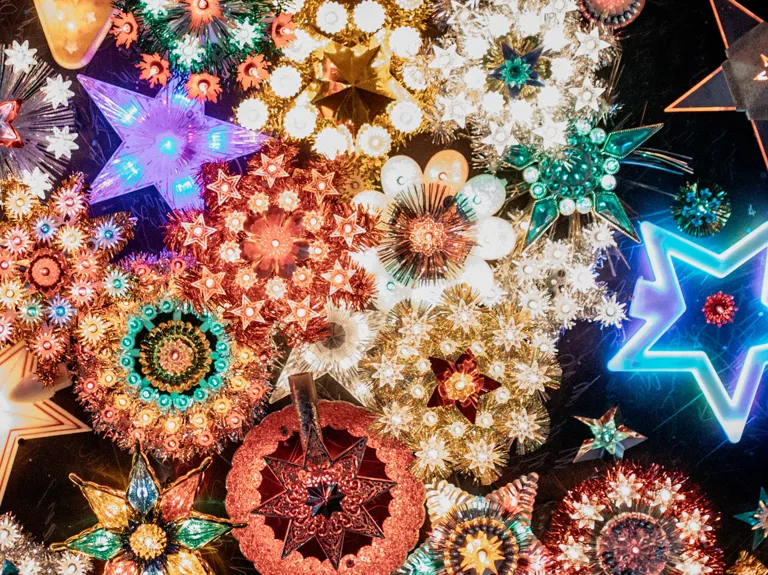
In his latest meditation on memory, beauty, and the passage of time, the influential mixed-media artist transforms illuminated Christmas tree toppers into magical vehicles of light, meaning, and ritual.
Further Borderlands
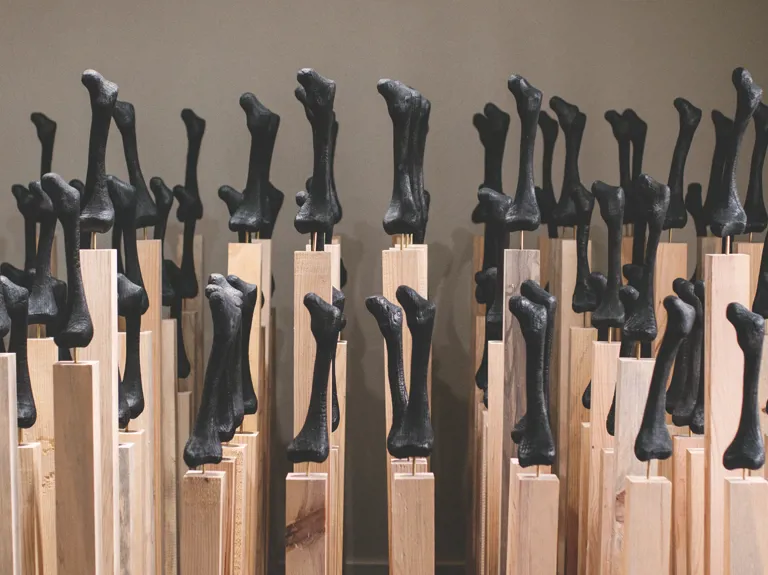
Further speaks to design collective La Metropolitana about their first work of art, an installation that uses wood to evoke the devastation of Mexico’s ongoing drug wars.
Further Borderlands
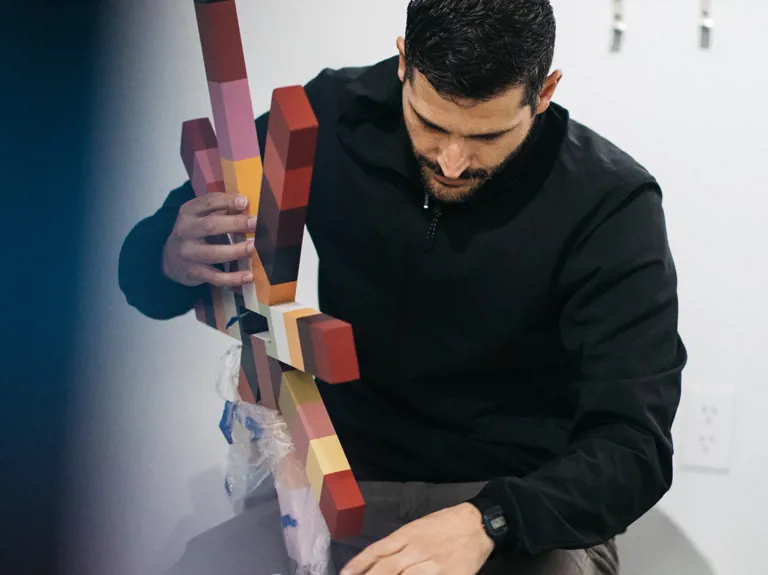
In his installation for Further Marfa, mixed-media artist Erick Meyenberg employs a color study to highlight the ecological dangers of the proposed border wall between Mexico and the United States.